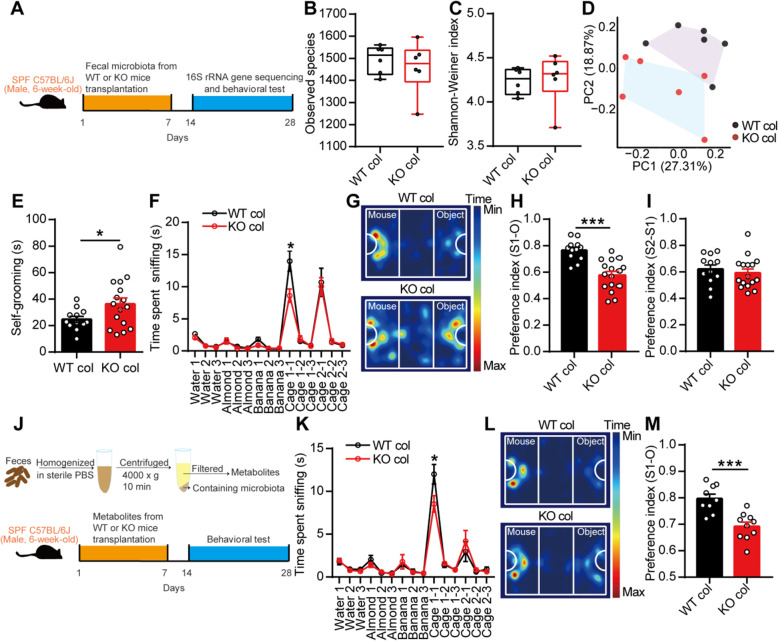Fig. 3.
Fecal microbiota transplantation from EphB6-deficient mice partially induced social deficits in 6-week-old SPF C57BL/6J mice. a–i Schematic of the fecal microbiota transplantation (a). The 6-week-old SPF male C57BL/6J mice were orally gavaged with fecal microbiota from 8-week-old male WT or KO mice for 1 week. After 1 week, the fecal microbiota of the treated C57BL/6J mice were sequenced (b–d, n = 6 mice for each group) and self-grooming test (e), olfactory habituation/dishabituation test (f), three-chambered social approach test (g–i) were conducted with an interval of at least 2 days (e–i, n = 12, 16 mice respectively). j–m Fecal metabolites from 8-week-old male WT and KO mice were orally gavaged to 6-week-old SPF male C57BL/6J mice for 1 week (j). After 1 week, olfactory habituation/dishabituation test (k) and three-chambered social approach task (l, m) were conducted with an interval of at least 2 days. n = 9, 10 mice respectively. Data shown are mean ± SEM or median ± IQR. Two-tailed unpaired student’s t test (e, h, i, m), Mann-Whitney test (b, c), mixed design ANOVA with genotype as independent factor and stimuli/trials as repeated-measure factor (f, k), anosim analysis (d). *p < 0.05; ***p < 0.001. WT col or KO col, colonized with fecal microbiota or fecal metabolites from EphB6+/+ mice or EphB6−/− mice. Statistical values are presented in Additional file 3: Table S2

